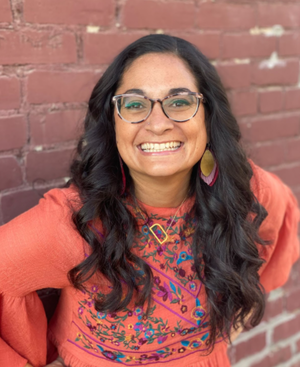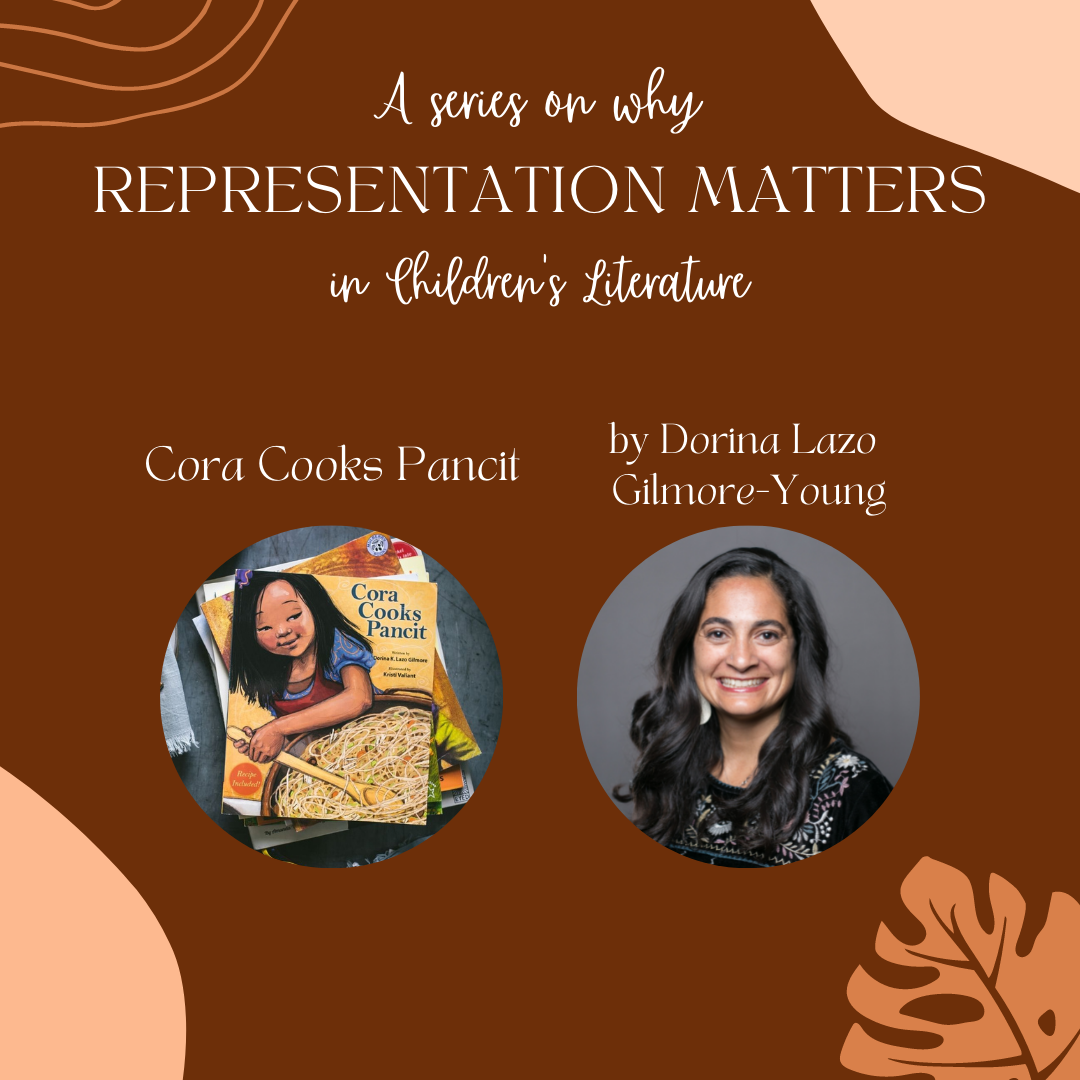|
This month I'm hosting a series on my blog on why representation matters in picture books. Today's guest post is by a wonderful author and speaker that I met online last year. Please welcome, Dorina!  I was a voracious reader when I was young. Part of this was instigated by my mother, who was a teacher, and read books aloud to my brother and me. She invited us to venture through the wardrobe into another world with Lucy, Edmund, Susan, and Peter. She made the poetry of Robert Frost come alive as we imagined those two roads that diverged in a yellow wood. My favorite picture book when I was a child was Nine Days to Christmas by Hall Ets, a Caldecott Winner. In the early ‘80s, it was one of the few books I could find that featured a girl with brown skin and included rich cultural details. Although our family did not have Mexican roots, I was mesmerized by this book. It transported me to another place that somehow felt like home. My mom had lived in Mexico and she affirmed the storyline of this book, where a girl named Ceci is eagerly awaiting Las Posadas - the traditional nine-day series of Christmas celebrations in her village. I examined the illustrations and poured over the pages of that book again and again. I felt like I was going to the market with Ceci and her mother to select the biggest piñata we could find. I dreamed of becoming a children’s book author one day and writing books like this one. I ended up pursuing a career in newspaper reporting and teaching, but one summer I found out about a class on writing children’s books. I knew it was time to pursue my dream of writing for kids. I eventually enrolled in the MFA in Children’s Literature program at Hollins University. Through my graduate work, I had permission to spend hours in the library reading children’s literature and writing stories. In those years, I had my first baby girl with two more to come. I longed to write books for my own multiracial daughters and others that centered characters of color. During that season, I wrote Cora Cooks Pancit about a Filipino-American girl learning to cook a traditional noodle dish with her mama. The book was a compilation of my own experiences growing up in the kitchen with my mama, grandmas and aunties as well as the stories I had gathered of other Filipino-American families in California’s Central Valley. I tried for several years to get that book published, but continued to receive nice rejection letters. Editors and agents told me they liked the story or the writing was good, but the book was too niche to sell. In other words, stories about a specific cultural group like this one would be hard to market. One day, I received a phone call from an editor named Renee Ting. She just read my manuscript and wanted to publish it. I almost dropped the phone. When I got home and consulted my notes, I discovered I had submitted to Shen’s Books two years earlier. In a few months, I signed a contract with Shen’s Books (today an imprint of Lee & Low Books). I didn’t have an agent, but Renee ushered me through the publishing process. My book baby, Cora Cooks Pancit, was born in June 2009 with illustrations by Kristi Valiant. Our book was awarded the Picture Book of the Year by the Asian American Librarian’s Association. We were invited to Washington, D.C. to receive the award and give speeches. The most magical part was meeting my illustrator Kristi in person and hearing more about her process in creating the beautiful illustrations. Over the next decade, I read Cora Cooks Pancit aloud and spoke at schools up and down the state of California. My greatest joy was seeing the faces of Filipino-American students light up when they recognized the signature dish that represented their culture - pancit. On several occasions, I cooked pancit for classes. Students from all different cultures tasted it for the first time. This was an open door to celebrate diversity and culture and to pivot away from the colorblind rhetoric that so often finds its way into education settings. Today, my Cora book is 11 years old and in her ninth printing. I like to think of her as a middle schooler in a new season for publishing. My heart is encouraged as I see a mounting desire among publishers, schools, and readers for books about and for children of color. My youngest daughter, who is 9 now, enjoys books like Colorfull by Dorena Williamson, Different Like Me by Xochitl Dixon, My Breakfast with Jesus by Tina Cho, The Mindy Kim series by Lyla Lee, and Any Day with You by Mae Respicio featuring kids that look like her. These books are not considered “too niche,” but regarded as an invitation to readers to learn from and about kids from multicultural backgrounds. We have tasted progress, but we have not yet arrived. Representation still matters. As an author, an educator, and a mother of three brave girls, I want to be part of carrying the torch. Our family recently started a membership program called Global Glory Chasers. Each month we focus on a specific country and curate a list of books, movies, music, and recipes so families can delve deeper into learning about different cultures together. I believe that reading and listening to diverse stories can help shape all of us. Stories have the power to educate, instruct, and heal. As a Christian, I look to Jesus as the best model for using stories to heal. Jesus was a storyteller. He brought the Good News. He chose to share stories that represented and challenged the people who listened. He invited the marginalized to tell their stories. He didn’t elevate the story of a tax collector over an abused woman, or a Jew over a Gentile. Instead, he treated each narrative as precious and part of the whole story being written by God Himself. His stories resounded with love and forgiveness. Psalm 107 says: “Let the redeemed of the LORD tell their story— those he redeemed from the hand of the foe, those he gathered from the lands, from east and west, from north and south.” (Psalm 107:2-3, NIV) These words, penned hundreds of years before Jesus’ ministry and before us, are an invitation to tell our stories. The Israelites continued to tell the story of how God restored them from captivity. Jesus told stories that would shape our understanding of His Father’s Kingdom. And we are called to tell our stories today. When we have fuller representation of stories by God’s image bearers, we experience a more dynamic narrative of who God is and the work He is doing in our world. Cora loves being in the kitchen, but she always gets stuck doing the kid jobs like licking the spoon. One day, however, when her older sisters and brother head out, Cora finally gets the chance to be Mama's assistant chef. Cora and Mama work together to cook up pancit for the family in this celebration of Filipino heritage and foods.  Dorina is an award-winning author, speaker, Bible teacher, and podcaster. She helps people chase God's glory down unexpected trails and flourish in their God-given callings. She and her husband Shawn are raising three brave daughters in Central California, who love to travel and learn about different cultures. Connect with her at www.DorinaGilmore.com. https://dorinagilmore.com/dorinas-childrens-books/ www.instagram.com/DorinaGilmore
17 Comments
|
Tina M. Cho, children's authorI'm a children's author and freelance writer for the educational market. Welcome! Archives
March 2024
Categories
All
|






 RSS Feed
RSS Feed
